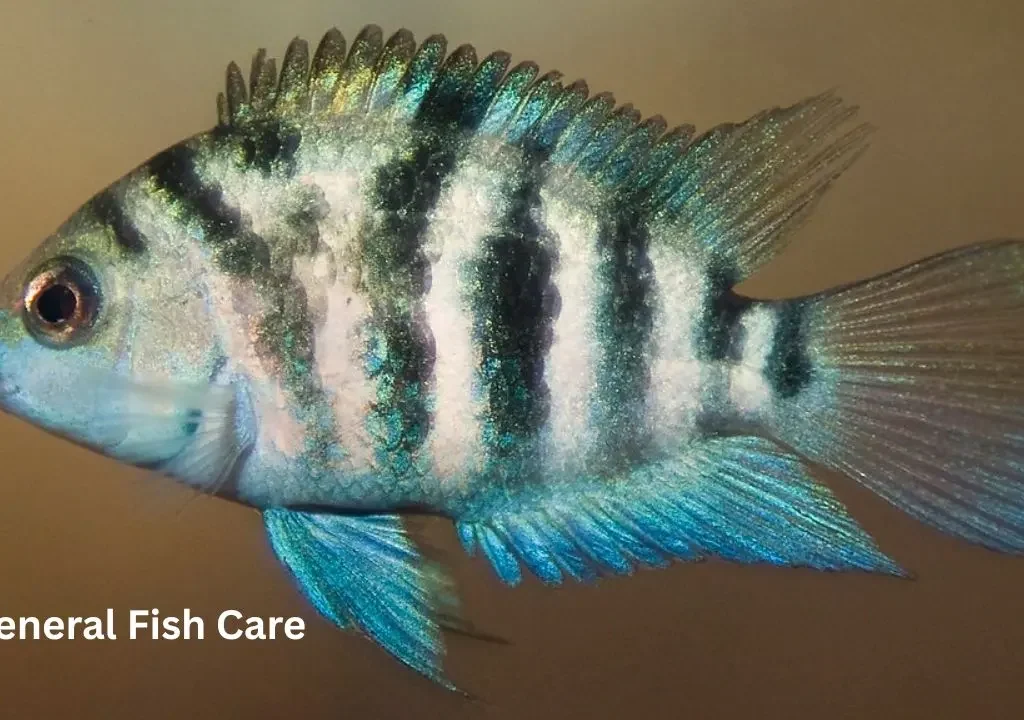The Real Truth About Convict Cichlid Care (With Proven Data)
If you’ve ever watched a Convict Cichlid guard its territory or tend to its fry, you know there’s something special about these fish. Scientifically known as Amatitlania nigrofasciata, they’re one of the most fascinating freshwater species I’ve kept, one of the easiest to care for once you understand their behavior.
Convict Cichlids are tough, smart, and full of personality. They’re incredibly adaptable and can thrive in a range of setups, which makes them a favorite among both beginners and experienced fishkeepers. But what really makes them stand out is how readily they breed in captivity. Give them the right conditions, and you’ll likely see eggs within weeks.
In this guide, I’m not just sharing tips from personal experience, everything here is backed by scientific studies, breeding experiments, and real-world research. Whether you’re keeping a single cichlid or planning to raise a breeding pair, this blog will give you clear, tested advice to help you care for them the right way.

Tank Size & Setup
When it comes to Convict Cichlids, tank size isn’t something to guess at. These fish are territorial, active, and messy—so giving them enough space is the first step to keeping them healthy and calm.
Based on breeding experiments and lab-tested setups, here’s what I’ve found to be the most effective tank sizes depending on your setup:
| Setup Type | Recommended Tank Size |
| Single Fish | 30–40 gallons |
| Breeding Pair | 40–75 gallons |
| Community Tank | 55 gallons or more |
Even if you’re just keeping one fish, I wouldn’t go below 30 gallons. It may seem like overkill, but trust me—these fish use every inch of space, and you’ll thank yourself later when you’re not dealing with constant aggression or cloudy water.
What to Include in Their Tank
Convicts are known for their digging and territorial habits, so your setup should work with their natural behavior, not against it.
Substrate: I always use sand or fine gravel, it lets them dig naturally, which helps reduce stress.
Décor: Clay flower pots are a favorite for breeding pairs, but I also like to add caves, rocks, and some driftwood to break up lines of sight and offer hiding spots.
Filtration: These guys are serious waste producers. A strong hang-on-back or canister filter is a must, especially since they love to kick up substrate.
Lighting: A 12-hour light/dark cycle works well to mimic their natural environment and keeps their daily rhythms in check.
Quick tip: Every now and then, I rearrange the décor to reset territories. It really helps when aggression starts ramping up, especially in tanks with more than one cichlid.
The more structure you build into their space, the more you’ll see their interesting behaviors shine without turning the tank into a war zone.

Water Parameters
When I first started keeping Convict Cichlids, I was surprised by how tough they are. They’re incredibly adaptable, if you want to see them thrive (not just survive), getting the water parameters right makes a huge difference.
Through breeding studies and real aquarium research, here’s what works best:
Temperature: 79°F (26°C) is the sweet spot. That’s where they grow the fastest and stay the most active. In the wild, the temp naturally swings between 79–84°F (26–29°C), so they can handle slight changes just fine.
pH: I aim for somewhere between 6.5 and 8.0. That’s a wide range, which is great because it makes them easy to keep in most tap water without a ton of adjustment.
Water Hardness: These cichlids are flexible with hardness too—5 to 20 dGH is ideal. My local water runs a bit hard, and they’ve done just fine.
I’ve found that stability matters more than hitting the “perfect” numbers. As long as you’re consistent with water changes and don’t let things swing too wildly, they’ll reward you with healthy color, good appetite, and even breeding behavior.
Feeding & Nutrition
Feeding Convict Cichlids is pretty straightforward, but a little structure goes a long way. These fish are omnivores, though they definitely lean toward the carnivorous side. In the wild, they snack on everything from insects and worms to algae and plant matter, I try to keep their diet just as varied in my tanks.
What I Feed Them
Main Diet: I stick with high-quality sinking cichlid pellets. Adults seem to prefer food that drops quickly, and sinking pellets help cut down on surface aggression.
Supplements: I like to mix in flakes, bloodworms, and frozen brine shrimp a few times a week. It keeps them active and helps with breeding conditioning too.
How Often?
I feed mine 2–3 times a day, but only what they can finish in 2–3 minutes. Overfeeding these guys is easy, it really messes with your water quality if you’re not careful.
One interesting tip I picked up from lab studies: feeding them on a Monday-Wednesday-Friday schedule actually worked better than daily feeding in terms of keeping the water clean. I’ve tried that with some of my setups, especially breeder tanks, and it helped reduce filter strain without affecting their health.
Breeding: What Science Says
If there’s one thing Convict Cichlids are famous for, it’s how easily they breed. I’m not exaggerating, once they pair up and settle in, they’ll spawn like clockwork. Scientific studies confirm it, and I’ve seen it play out in my own tanks.
Breeding Timeline (Tested & Proven)
Under the right conditions, you can expect a new spawn every 12–13 days. That means if you’re not prepared to manage fry, things can get out of hand fast.
Here’s how the typical cycle goes:
Once the fry are mobile, the parents get to work, constantly herding, guarding, and moving them between little pits they dig in the substrate.
How Parenting Works
One thing I find amazing is how consistent their roles are:
The male takes charge of defending the territory. He’ll chase off anything, even fish twice his size, if it gets too close.
The female is all about fry care. She’ll hover near the young, move them around, and nudge stragglers back into the group.
Over time, each pair actually develops a rhythm of their own. I’ve kept a few bonded pairs long-term, and their parenting style became almost predictable across multiple spawns. That level of coordination is rare in aquarium fish, it’s a big part of why I enjoy keeping Convicts so much.

Aggression & Behavior Control
If you’ve ever kept Convict Cichlids, you already know, they don’t play around when it comes to defending their space. And when breeding starts? Their aggression kicks into overdrive.
What the Research Shows
Aggression spikes during spawning. I’ve seen males chase tank mates nonstop during this time, and the female isn’t much calmer.
Females, interestingly, tend to be more reactive to environmental changes, like moving a decoration or shifting water parameters. They notice it all.
Studies show aggression decreases when you add more caves, rocks, and hiding spots. Basically, the more complex the tank, the more everyone can keep to their own corner.
What’s Worked for Me
Break sight lines. Place décor in a way that fish can’t always see each other, this cuts down on territory disputes fast.
Rearrange the layout weekly. It throws off established territories and gives less aggressive fish a chance to reset their space.
Skip the breeding pairs unless you really want fry. Even one pair can dominate a tank and stress out every other fish in it.
These fish are smart and quick to react, so a little bit of planning goes a long way in keeping the peace.
Tank Mates: What Works and What Doesn’t
Choosing tank mates for Convict Cichlids is a balancing act. You need fish that can hold their own without becoming rivals—or lunch.
What’s Worked in My Tanks
Other Central American cichlids like Jack Dempsey, Firemouth, and Green Terror have been solid companions when space allows.
Bristlenose Plecos are great, they mind their own business and clean the tank.
For movement and distraction, I’ve used Giant Danios as fast-moving dither fish. They’re too quick to catch and help reduce tension in the tank.
What to Avoid
Small, peaceful fish like tetras or guppies won’t last long in a convict tank. Even if they’re not eaten, they’ll get bullied nonstop.
Multiple breeding pairs in the same tank? Not worth the headache. Unless you’re working with a huge aquarium and carefully planned territories, they’ll fight until someone gives uppermanently.
The key is to treat Convicts like the semi-aggressive species they are. With the right tank mates and setup, they can actually be great community fish, only with fish that understand the rules.
Growth, Lifespan, and Health
Convict Cichlids may be small, but they grow fast when kept under the right conditions.
Males can reach up to 6 inches, while females usually max out around 4.5 inches.
With good care, these fish live anywhere from 8 to 10 years, which is impressive for a freshwater species.
In my tanks, I’ve seen the fastest and healthiest growth when keeping the temperature steady around 79°F (26°C).
Since they’re high-waste fish, I make sure to use strong biofiltration and stick to a routine of regular water changes, usually 30% weekly. If you keep up with maintenance, they’ll reward you with years of vibrant color and nonstop activity.
Common Issues & Scientific Solutions
Even though Convict Cichlids are hardy, there are a few common challenges that almost every keeper runs into. Here’s how I handle them, backed by both experience and what science says works.
Problem: Overbreeding
→ Solution: Keep same-sex groups if you don’t want fry. If you’re breeding on purpose, make sure you have a plan to rehome or raise the fry. Otherwise, you’ll have dozens of tiny mouths before you know it.
Problem: Aggression
→ Solution: Add more décor, more caves, and break up sight lines. A bigger tank helps too. I also rearrange the setup regularly to keep territories from becoming too “locked in.”
Problem: Water quality crashes
→ Solution: Use a canister filter (or a strong HOB), don’t overfeed, and commit to weekly 30% water changes. These fish stir up everything, so a lazy filter just won’t cut it.
Conclusion
Convict Cichlids are one of those fish that teach you a lot – fast. They’re bold, interactive, and extremely rewarding for hobbyists who plan ahead.
By following care methods rooted in real research and tested in actual aquariums, you’ll not only keep them alive, you’ll help them thrive.
Whether you’re raising a single fish or a full breeding pair, these cichlids will keep you engaged every step of the way. Just be sure to stay responsible with breeding, respect their space, and give them the setup they deserve.

